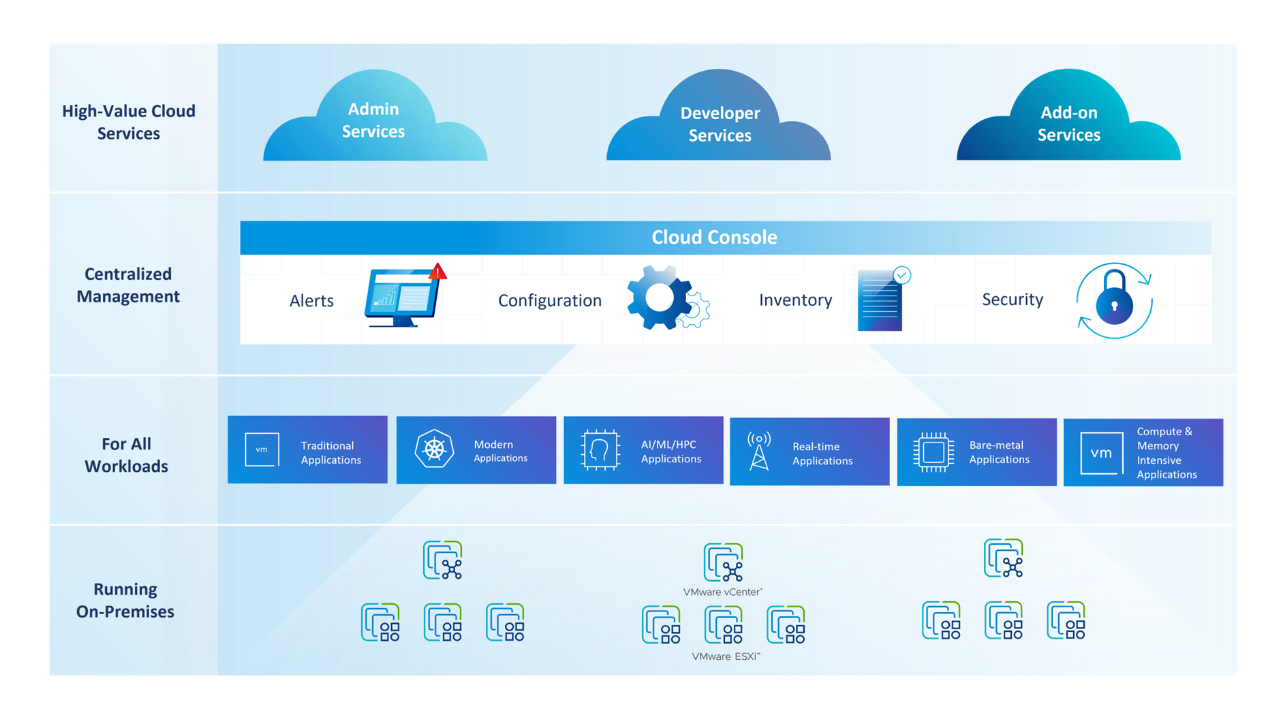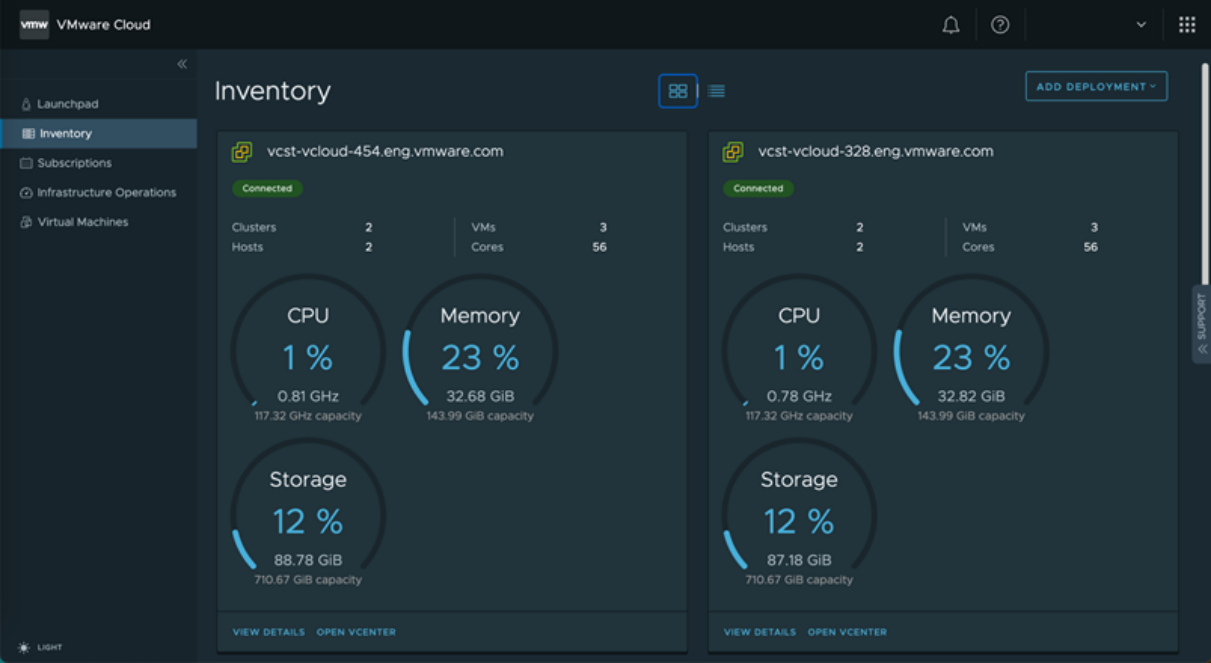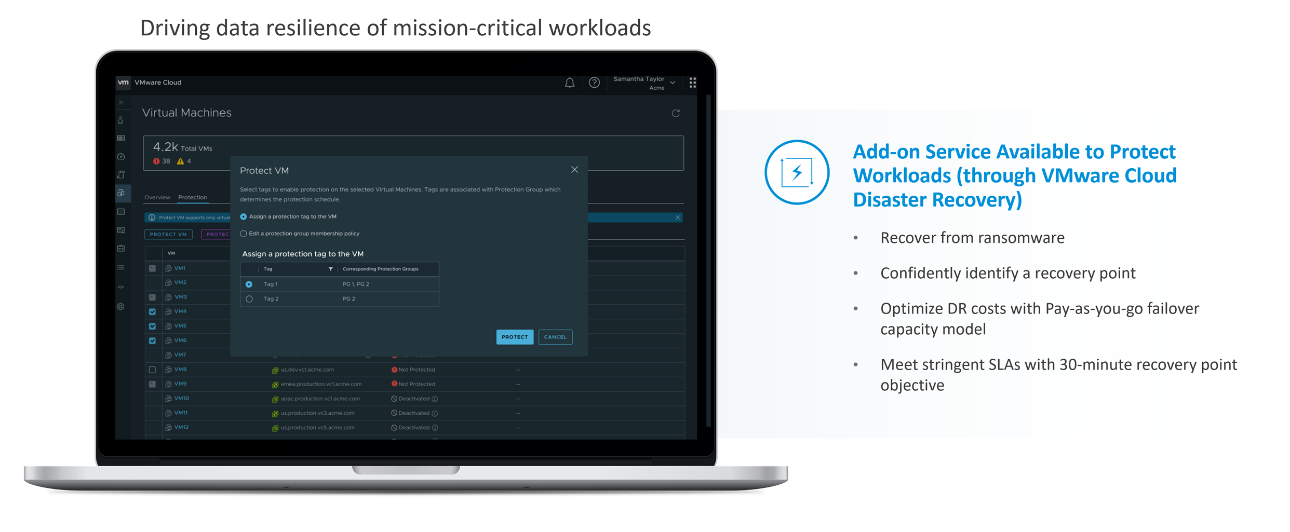
ESG WHITE PAPER
Accelerate Innovation and Transform Operations with VMware vSphere+
How to Deliver Successful AI Projects by Reducing Risk and Boosting Performance
By Scott Sinclair, Practice Director
APRIL 2023
Overview
Essentially, even as cloud adoption is increasing, organizations are not abandoning on-premises infrastructure. They are instead embracing multi-cloud environments. In most cases, public cloud services aren’t replacing on-premises infrastructure—especially for mission-critical workloads. Rather, organizations are leveraging both public cloud resources and on-premises infrastructure together in order to scale effectively enough to meet business demands.
Whether the location is the data center, the edge, or the cloud—or all of those locations—decision-makers have realized that IT modernization is essential to accelerate innovation and align technology platforms to current business objectives. As such, organizations must wholeheartedly embrace change and modernization for everything—from development and deployment strategies to architecture, infrastructure, and services.
Typical organizations now consider 74% of their traditional on-premises applications to be strong or potential candidates for migration to the public cloud.
The Movement to Modernize IT, and the Growth of Workloads in the Public Cloud
Constantly changing competitive landscapes, a shifting regulatory environment, and new and more demanding customer expectations are collectively ratcheting up the pace of change and innovation and increasing pressure on IT and cloud teams to accelerate operations.
This is true for both large multinational corporations and any organization whose legacy infrastructure is no longer keeping pace with demand. According to Enterprise Strategy Group (ESG) research, 91% of IT organizations have had to accelerate IT operations over the past three years, even as they deal with skill gaps and budget constraints.
vSphere+ Brings Cloud Benefits to On-premises Locations
VMware’s expertise in creating tools that support efficient, flexible, scalable application environments has already enabled countless organizations to align their technology platforms with their business goals. Now, VMware has introduced vSphere+ to address these modernization challenges.
vSphere+ (see Figure 2) is the enterprise workload platform that brings the benefits of cloud to on-premises workloads. vSphere+ combines industry-leading virtualization technology, an enterprise-ready Kubernetes environment, and high-value cloud services to transform existing on-prem deployments into SaaS-enabled infrastructure that centralizes management, boosts productivity, and accelerates innovation. With vSphere+, IT admins and developers can easily build, run, manage, protect, and secure their traditional and next-gen applications. vSphere+ can be purchased through a flexible subscription plan that better aligns with the business.
Figure 2. vSphere+ Capabilities

Details of vSphere+
Boost Productivity with Admin Services
Figure 3. Centralized Management with the vSphere+ Cloud Console

Accelerate Innovation with Developer Services
Figure 4. vSphere+ Cloud Consumption Interface

Figure 5. vSphere+ for DevOps—Topology Diagram

Transform On-premises Infrastructure with Cloud Integration
Figure 6. Protect Workloads with Cloud Disaster Recovery

The Bigger Truth
This Enterprise Strategy Group White Paper was commissioned by VMware and is distributed under license from TechTarget, Inc.
All product names, logos, brands, and trademarks are the property of their respective owners. Information contained in this publication has been obtained by sources TechTarget, Inc. considers to be reliable but is not warranted by TechTarget, Inc. This publication may contain opinions of TechTarget, Inc., which are subject to change. This publication may include forecasts, projections, and other predictive statements that represent TechTarget, Inc.’s assumptions and expectations in light of currently available information. These forecasts are based on industry trends and involve variables and uncertainties. Consequently, TechTarget, Inc. makes no warranty as to the accuracy of specific forecasts, projections or predictive statements contained herein.
This publication is copyrighted by TechTarget, Inc. Any reproduction or redistribution of this publication, in whole or in part, whether in hard-copy format, electronically, or otherwise to persons not authorized to receive it, without the express consent of TechTarget, Inc., is in violation of U.S. copyright law and will be subject to an action for civil damages and, if applicable, criminal prosecution. Should you have any questions, please contact Client Relations at cr@esg-global.com.
About Enterprise Strategy Group
Enterprise Strategy Group is an integrated technology analysis, research, and strategy firm that provides market intelligence, actionable insight, and go-to-market content services to the global IT community.
© TechTarget 2023.
